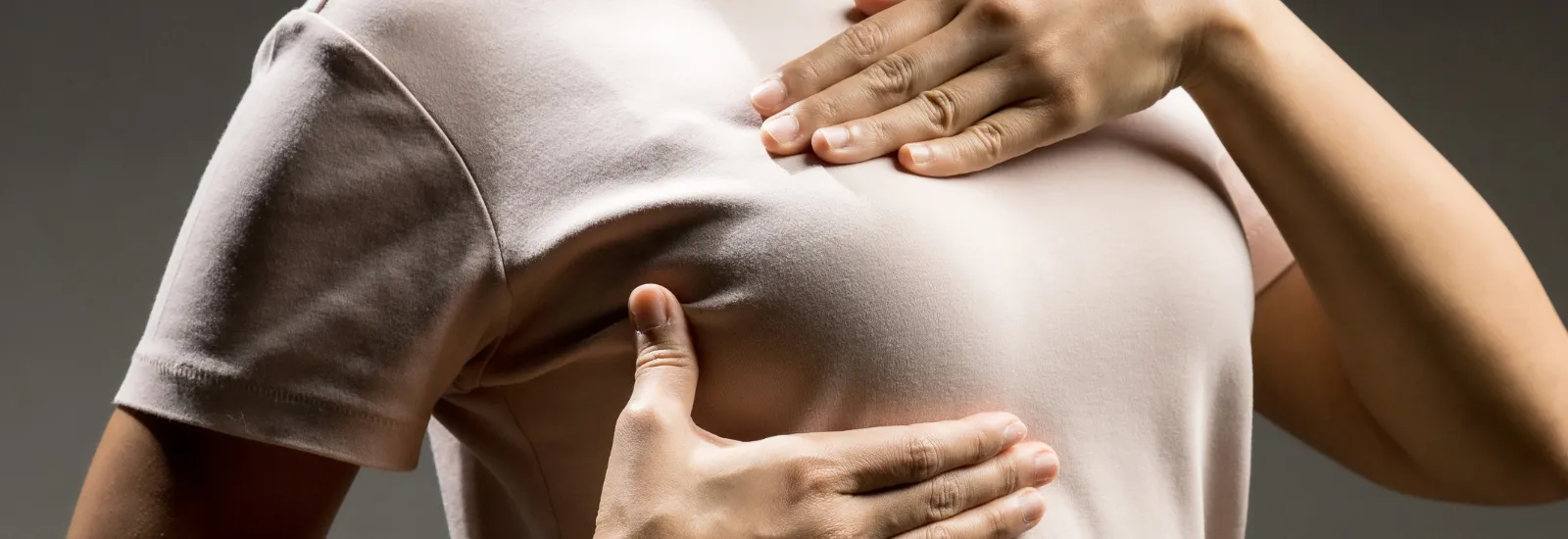How to do a breast self-exam
 Breast cancer is more treatable when it is detected early. Fortunately, advances in mammography make breast cancer diagnosis better than ever. But don’t just think about your breast health at your annual OB/GYN visits. You should also perform your own breast self-exams throughout the year.
Breast cancer is more treatable when it is detected early. Fortunately, advances in mammography make breast cancer diagnosis better than ever. But don’t just think about your breast health at your annual OB/GYN visits. You should also perform your own breast self-exams throughout the year.
A breast self-exam should never take the place of your annual mammogram or give you a reason to avoid mammograms. But breast self-exams are a simple way for you to keep an eye on your breast health between appointments. If you do notice changes, such as finding a lump, you should contact your provider who can determine if you need further testing. Remember, early detection saves lives.
A monthly affair
A breast self-exam here and there isn’t too helpful. For these exams to be useful, you need to do them regularly. Ideally, you’ll do a breast self-exam every month.
With a monthly breast self-exam, you learn what’s normal for your breasts. Once you learn what’s normal, abnormalities stick out. That’s the power of breast self-exams. They help you identify potential problems between mammograms.
Just in time
When it comes to breast self-exams, every day of the month is not equal.
Prior to menopause, hormonal changes during your monthly cycle can cause temporary lumps and breast tenderness. The best time to do a breast self-exam is usually a few days after beginning your period.
After menopause, it doesn’t matter when you do your monthly exam, as long as it’s consistent. It may be easier to remember on the first or last day of every month. Whenever you do it, stick to your routine.
Performing a breast self-exam
It’s important to learn how to do a proper breast self-exam and do it the same way every month.
On your back
Lie down on your back. Put your left hand behind your head. Use your right hand to feel your left breast. Push down firmly and gently with your hand’s middle three fingers. When pushing down, move your hand:
- Directly up and down (toward feet and toward your head)
- From outside the breast toward the nipple (from all directions)
- In a circular motion
When you are finished, repeat the process on your other breast.
With a mirror
With your arms resting comfortably by your side, stand up straight in front of a mirror. Start by visually examining your breasts. Then feel your breasts carefully as you did while lying down.
Raise your arms overhead and pay attention to how your breast shape changes. Next, place your hands on your hips and flex your chest muscles. To do this, push down against your hips. This will cause your chest muscles to flex and your breasts to shift slightly.
In each position, notice the shape and texture of each breast. Note if your nipples turn inward or outward. Each month, keep track of any changes you see.
The goal is to know your breasts so well that you will notice any change that occurs. It may be a change in color, shape, or size. You may experience dimpling, indentations, or puckering of the breast. Check for soreness, swelling, redness, or rash. If your breast skin develops a new texture, write it down.
On a chair
Sit in a straight-backed chair. (Or stand up — whichever is more comfortable.) Check for discharge by squeezing the nipple. Do this gently with both breasts. If you have a discharge, don’t be alarmed. This might be normal for you but pay attention to what it looks like.
Next, feel each of your armpits, one at a time. Breast tissue extends into the armpit, so get to know how it feels and track any changes there as well.
In the shower
You can perform your breast self-exam in the shower, except for the parts that require you to lie down or use a mirror. Examining your breasts in the shower has a few benefits:
- It’s easier to remember. Connecting your exam to a shower may help you remember to do it regularly. You can even put a small reminder inside your shower to keep you on schedule.
- It’s easier to perform. In the shower, your skin is wet and slippery. Many women find this makes the exam easier.
Breast self-exam response
Notice a change during a breast self-exam? There are two things you shouldn’t do.
1. Don’t freak out. It’s normal for your breasts to change. Hormones, injury, or a nonthreatening breast condition can cause changes. Sometimes, those changes include finding a lump. Many women have lumps in their breasts, but most breast lumps aren’t cancerous.
2. Don’t ignore it. Although changes in your breast could be nothing to worry about, you shouldn’t ignore them either. Always talk with your OB/GYN if you notice a change in your breasts. Ask if additional imaging, such as 3D mammography, could help. Keep in mind that breast cancer can affect anyone, including young women.
If your provider suspects cancer, he or she may refer you to a breast specialist. This expert may run additional tests. If the breast specialist finds cancer, particularly in its early stages, you will have access to more treatment options.
For more information about breast care, including advanced 3D mammography, visit the Reid Health Breast Center.